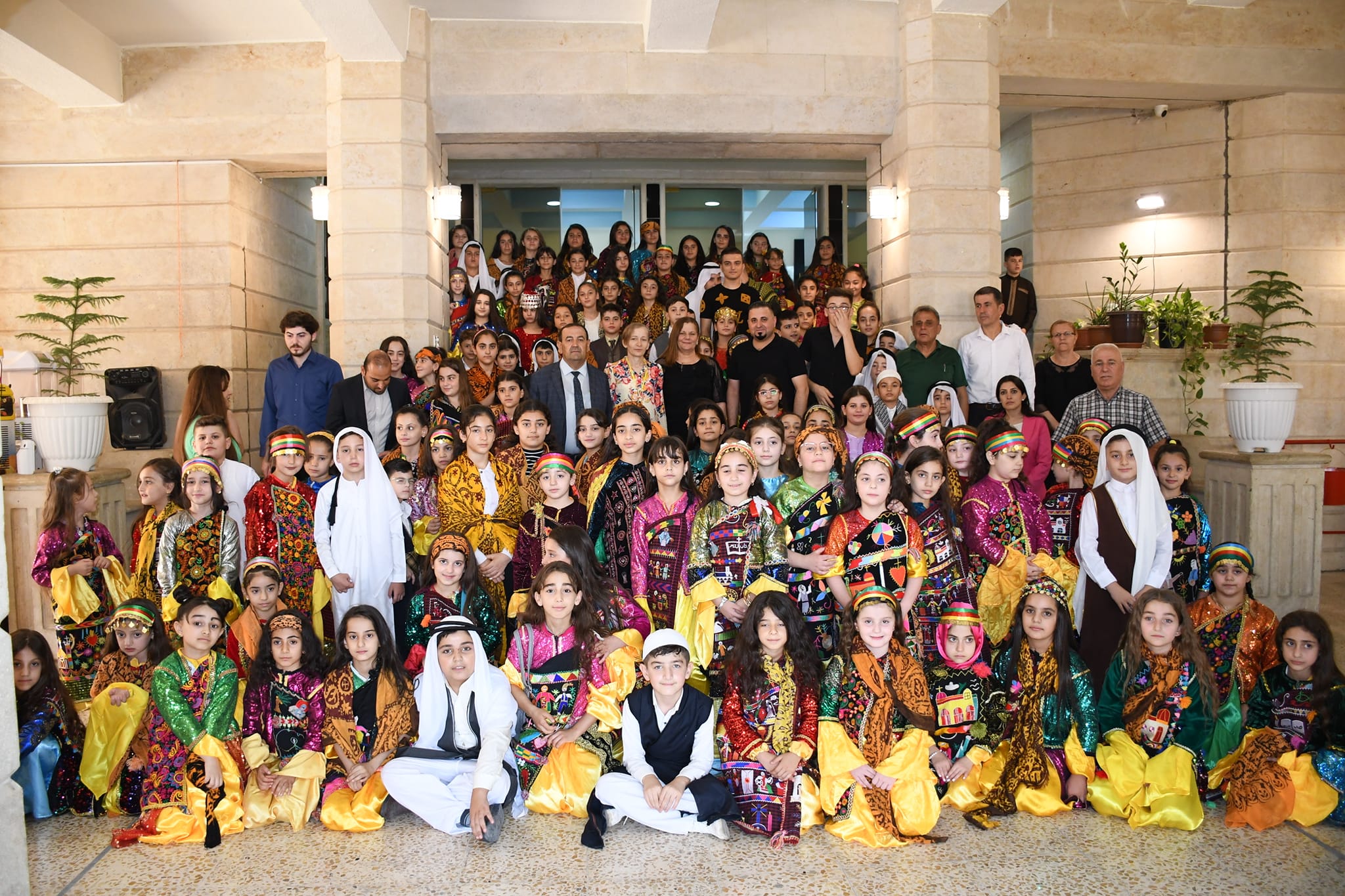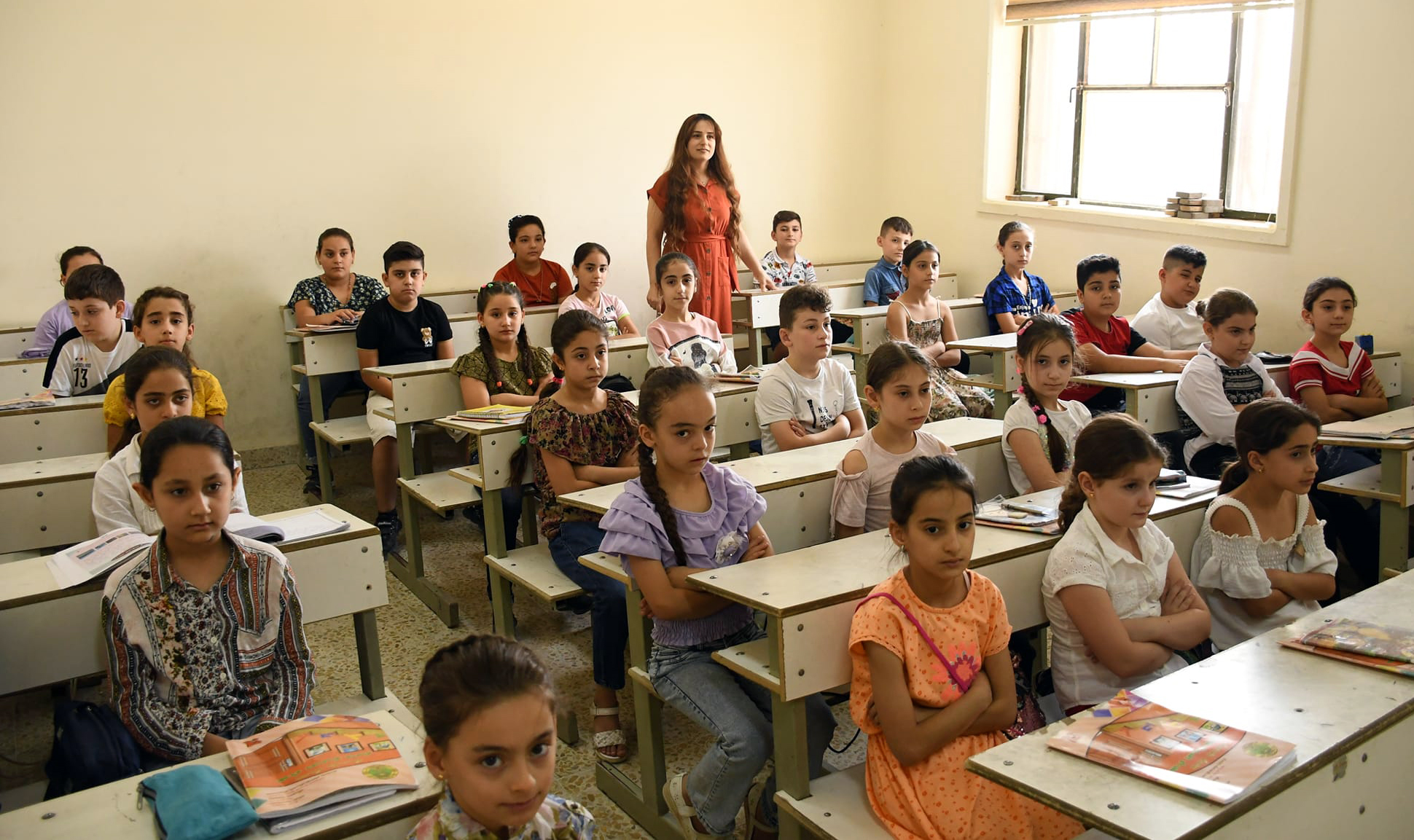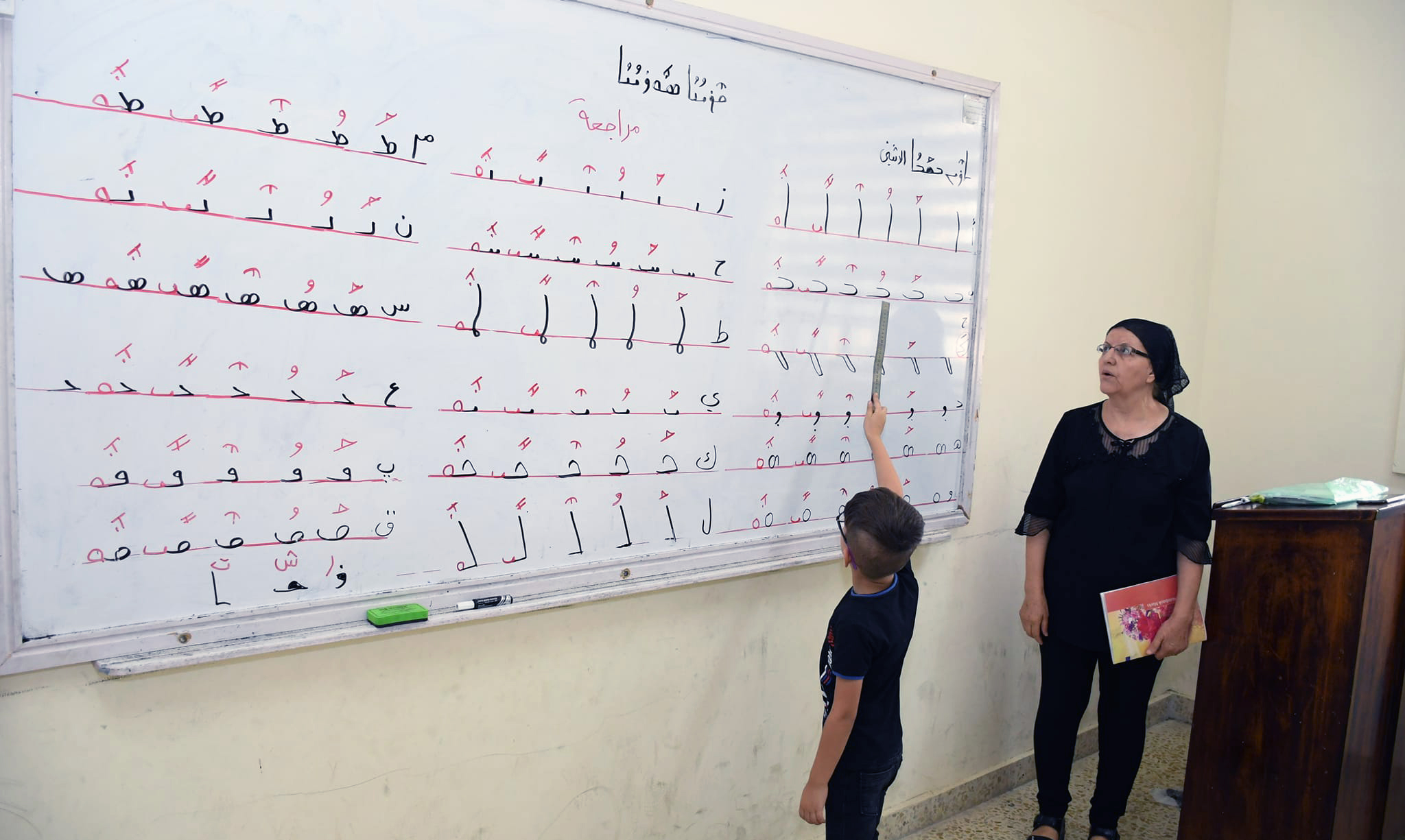There are only four Syriac schools in all Christian areas of Ninewa, but few families send their children to school there and fear for their future.
Anas Sabri, a Christian in the Ninewa Plain, has admitted his daughter into an Arabic school and only takes her to summer courses in order to learn and strengthen the Syriac language during the holidays.
“There is only one Syriac language lesson in Arabic schools, which does not make the students learn the language well, so I sent her to a summer course,” Anas told KirkukNow.
Sabri is a Christian from the central district of Hamdaniyah (southeast of Mosul), a predominantly Christian area where there are two Syriac schools teaching all curriculums in Syriac language.
Anas believes the government has neglected to support Syriac education, because if a child completes elementary and high school in Syriac, then there are no public colleges and universities to continue their education there.
Followup story by KirkukNow found out the Syriac language, once the main language for the Christian community in Iraq, being replaced by Arabic especially among the younger generations.
One of the reasons behind diminish of the ancient Aramaic language is the nationalistic strategy of Saddam regime which banned learning and teaching Syriac in the last two decades of 19th century,
Christianity ranks the second religion after Islam in Iraq and it is a recognized religion by Iraqi constitution and their official language is Syriac.
Two decades ago, Iraq was home for over 2.5 million Christians, 3% of Iraq's population falling to 1.8 m in 2003 following gulf war. They were mainly living in the provinces of Baghdad, Nineveh, Duhok, Kirkuk and Erbil.
Latest figures say currently only 400,000 Christians are living in Iraq, mainly in Mosul and the adjacent Kurdish region. Education in Syriac was free in the subdistricts of Sarsang and Nahla of Duhok northern province since 1990s following the ousting of Saddam regime from the three Kurdish provinces of the Iraqi Kurdistan Region IKR.
Today, only 100,00 Orthodox and Catholic Christians in Iraq can speak Syriac. Big part of the vulnerable community fled abroad and many families are still waiting for confirmation of their migration in neighbor countries of Jordan, Turkey and Lebanon.

There are Syriac language departments only at Baghdad University and Salahaddin University in Erbil, capital of the IKR.
“Instead of the government, clerics and churches are trying to pay attention to the Syriac language by launching courses, but the government has turned its back on Syriac when, like any other community, we have the right to education in that language,” Sabri added.
On August 8th, before the preparations for the new academic year, the largest course for learning and strengthening the Syriac language was opened in the city of Qaraqush, the center of Hamdaniyah district, for 700 students, with the support and assistance of the church.
“Most people send their children to Arabic schools because they think their future is unclear if they study in Syriac and furthermore cannot continue their education,” said Salah Sarkis, principal of Mar Afram elementary and teacher of Syriac language.
Most people send their children to Arabic schools
Syriac education has been opened in Ninewa and is part of the provincial education department. There are only four schools in the Ninewa plain, two in the center of Hamdaniyah and two in Bartalah (a Christian area east of Mosul). The main subjects in primary, secondary and high schools are in Syriac.
In contrast, there are about 100 Arabic schools and several Kurdish schools in the Christian areas of the Ninewa Plain, while Arabic schools have only one Syriac language subject.
“The Syriac language is certainly in trouble; the lack of proper schools, the lack of attention to Syriac education and the lack of knowledge of the language have endangered it,” said Sarkis.
“We want to teach the young generations their own language to preserve it.”

According to the 2021-2022 academic year, there were less than 700 students in the four Syriac schools in the Ninewa Plain, while the Arab schools in these areas had more than 5,000 students.
There are about 100 Syriac language teachers in the district, who teach Syriac language in Syriac and Arabic schools as well, said Isam Mikha, an educational supervisor of Syriac education in Hamdaniyah.
"There are few Syriac teachers and schools. We have asked for more, but there has been no result," he said, adding that summer courses are launched with the support of the church to develop the Syriac language and teach children.
According to the Iraqi constitution, the Syriac language is recognized and protected, and each community should be given the right to use its own language and culture in the majority areas.
Most of the current generation have problems with the Syriac language
The Official Languages Law No. 7 of 2014 also states Syriac is the official language in the majority administrative units, schools can be opened in that language for all levels of education, and it is the duty of the state to support and develop it.
"The existence of Syriac education is only superficial and does not play an important role, because the Iraqi government has neglected the Syriac language, only because they are a minority, the attention is not enough,” said Vian Jalal Markus, a Chaldean activist.
Video: A Christian woman talks about preparations for Christmas and New Year 2020 in Syriac. KirkukNow Archive
The previous Iraqi government, led by Saddam Hussein (1979-2003), banned the use of Syriac in the 1980s until the fall of his government, except in religious ceremonies in some churches of Basra, Baghdad, Kirkuk and Ninewa.
Christians live in Iraq since the first centuries of the religion and include Chaldean, Syriac, Assyrian and Armenian churches, about 14 sects.
The Iraqi Christian community suffered decades of discrimination and persecution since fall of Saddam regimes in 2003 amid the majority Muslim population and its leaders, yet finally have found north of Iraq a safe haven till the pop up of ISIS extremist militant group.
Figures by Iraqi Human rights commission states that 1.5 million Christians were living in Iraq in 2003. Following sectarian violence that plagued the country, the war against al-Qaeda and ISIS, over thousand Christians were killed. Currently, almost 250,000 live in Iraq, mainly in the stable northern provinces.
Aid Yousef Hanna, a Christian from Tilkif district (north of Mosul), principal of a Kurdish school in al-Qush district, affirmed there are no Syriac schools in Tilkif district and its surroundings “thus the churches are teaching Syriac to fill that gap.
“The biggest challenge with the Syriac language is that if a student studies in Syriac until high school and then goes to college or university, he will face many problems because there are no colleges that teach Syriac,” Hanna said.
“No Syriac language lessons are taught in Arabic schools, but hopefully in the future, the Kurdistan Regional Government will add Syriac language.”
Some Iraqi Christians in the Ninewa Plain were forced by the extremist militants of so-called Islamic State ISIS to choose one of three options: convert to Islam, pay ransom (Jizyah) or leave their towns, urging thousands to migrate forever.






